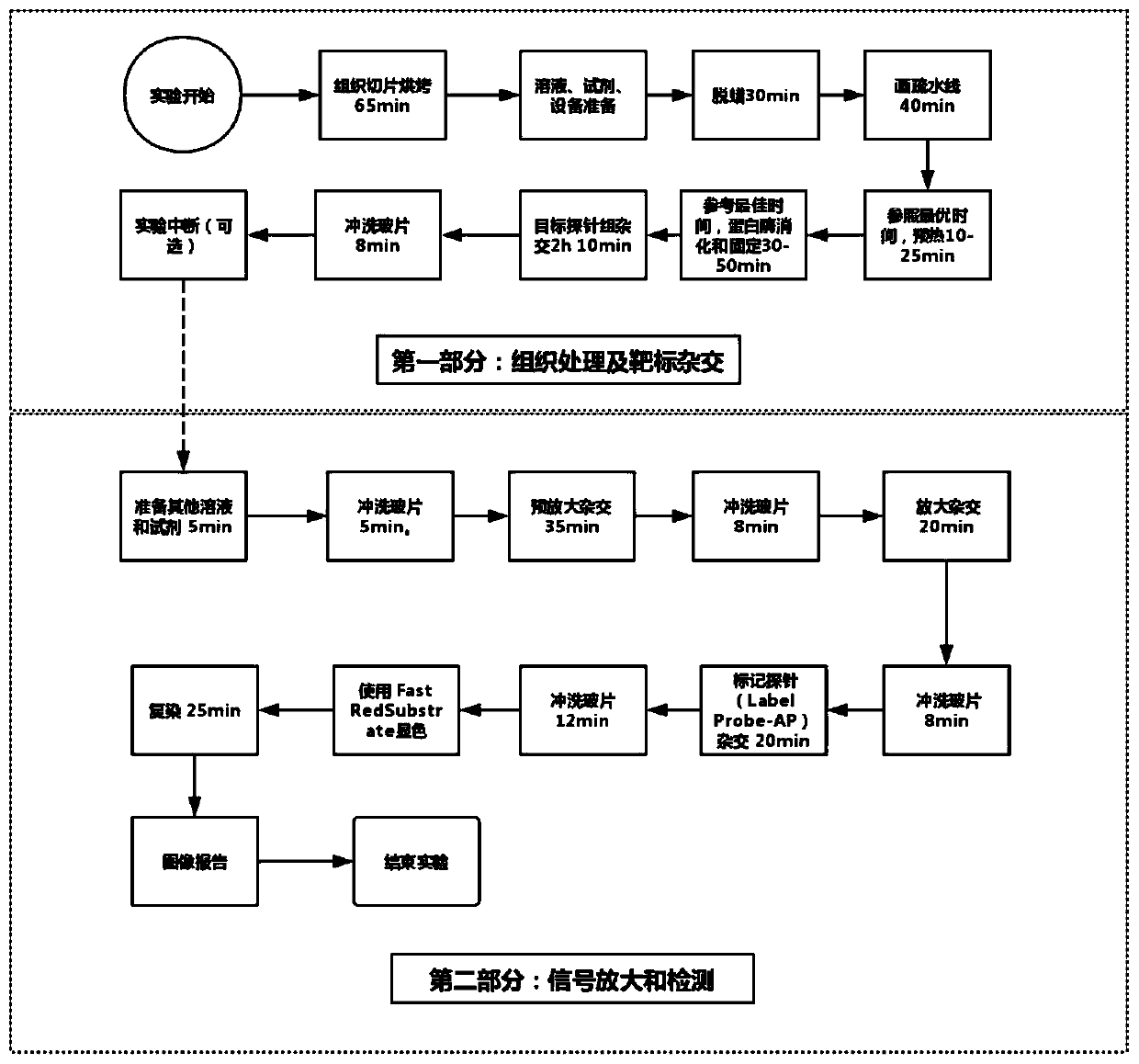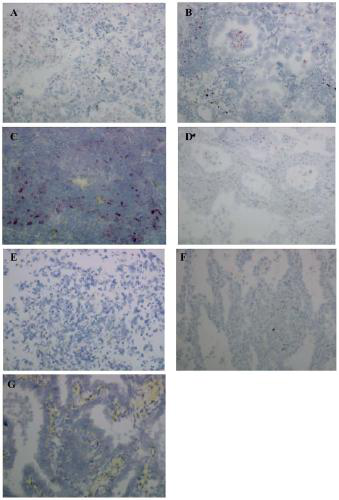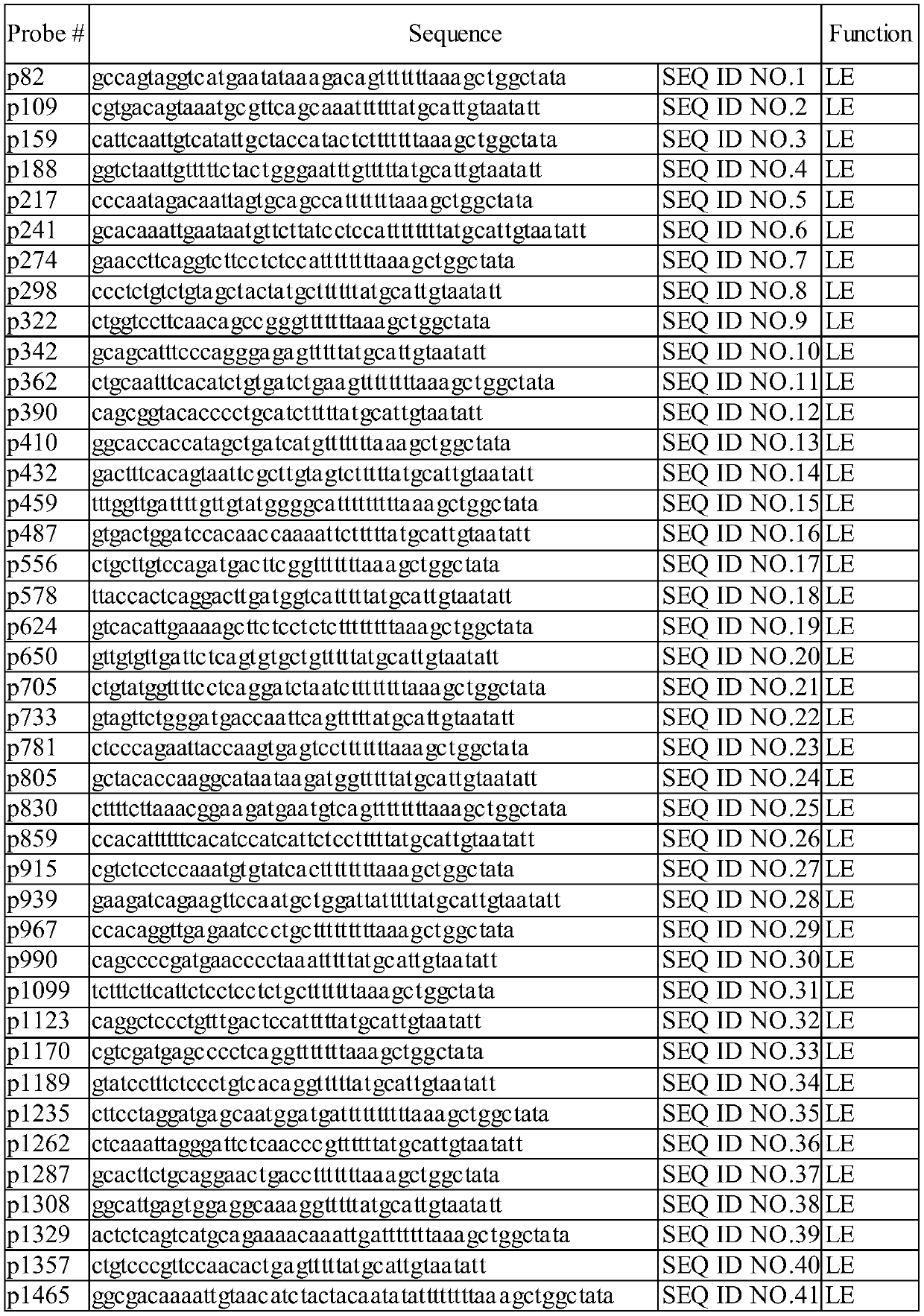Kit and method for detecting programmed cell death 1 ligand 1 (PD-L1) mRNA on tissue
A kit and tissue technology, applied in the field of kits for detecting PD-L1mRNA on tissue, can solve problems such as false negatives, affecting probe penetration, unreasonable probe design, etc.
- Summary
- Abstract
- Description
- Claims
- Application Information
AI Technical Summary
Problems solved by technology
Method used
Image
Examples
Embodiment 1
[0028] Example 1. Probe design
[0029] By comparing the PD-L1 mRNA sequence, design and synthesize multiple PD-L1 specific probes, as shown in Table 1. The probe design follows the principle of pairwise pairing and cooperative capture. All in situ hybridized cDNA probes do not exist in isolation, and need to be paired with paired probes to combine with the branched DNA amplification tree structure.
[0030] Table 1 PD-L1 specific probes
[0031]
[0032]
[0033]
Embodiment 2
[0034] Embodiment 2. Detection method
[0035] 1. Pretreatment of tissue and hybridization of target
[0036] 1. Bake tissue slices at 60℃ for 1h.
[0037] 2. Prepare the following liquid in the gap between the baked slices:
[0038] (1) Prepare 2L 1×PBS: 1.8L ddH 2 O+0.2L 10×PBS;
[0039] (2) Prepare 200ml 10% NBF: 178ml 1×PBS+22ml 37% formaldehyde in the fume hood;
[0040] (3) Prepare 3L 1× washing buffer: 2.94L ddH 2 O+60ml 50× washing buffer, this washing buffer can be kept at room temperature
[0041] Deposit for 1 month;
[0042] (4) Prepare 500ml 1×pretreatment solution: 495ml ddH 2 O+5ml 100×pretreatment liquid;
[0043] (5) Prepare the following reagents:
[0044] 400ml xylene, 400ml 100% ethanol
[0045] (6) Preheat 1×PBS and probe dilution to 40°C. Preheat the substrate enhancement solution and the substrate dilution solution to room temperature.
[0046] 3. 30min dewaxing:
[0047] Do the following in the fume hood:
[0048] (1) Pour each 200ml xylene into two washing liquid tanks....
Embodiment 3
[0112] The 7 cases of lung adenocarcinoma tissues were tested according to the above experimental procedures, and Dako’s PD-L1 antibody 22C3 antibody was used for testing. The results are shown in figure 2 . The statistical results are shown in Table 3.
[0113] Table 3 Test results of 7 cases of lung adenocarcinoma
[0114] Lung adenocarcinoma tissue sample PD-L1 mRNA test results PD-L1 223C antibody test results A2+++ B2++ C3+++ D-- E-- F-- G-+
[0115] The results showed that 3 out of 7 lung adenocarcinoma tissues showed high expression of PD-L1mRNA ( figure 2 ), the conformity of the expression level is equivalent to the detection result of the protein level.
PUM
 Login to View More
Login to View More Abstract
Description
Claims
Application Information
 Login to View More
Login to View More - R&D
- Intellectual Property
- Life Sciences
- Materials
- Tech Scout
- Unparalleled Data Quality
- Higher Quality Content
- 60% Fewer Hallucinations
Browse by: Latest US Patents, China's latest patents, Technical Efficacy Thesaurus, Application Domain, Technology Topic, Popular Technical Reports.
© 2025 PatSnap. All rights reserved.Legal|Privacy policy|Modern Slavery Act Transparency Statement|Sitemap|About US| Contact US: help@patsnap.com



